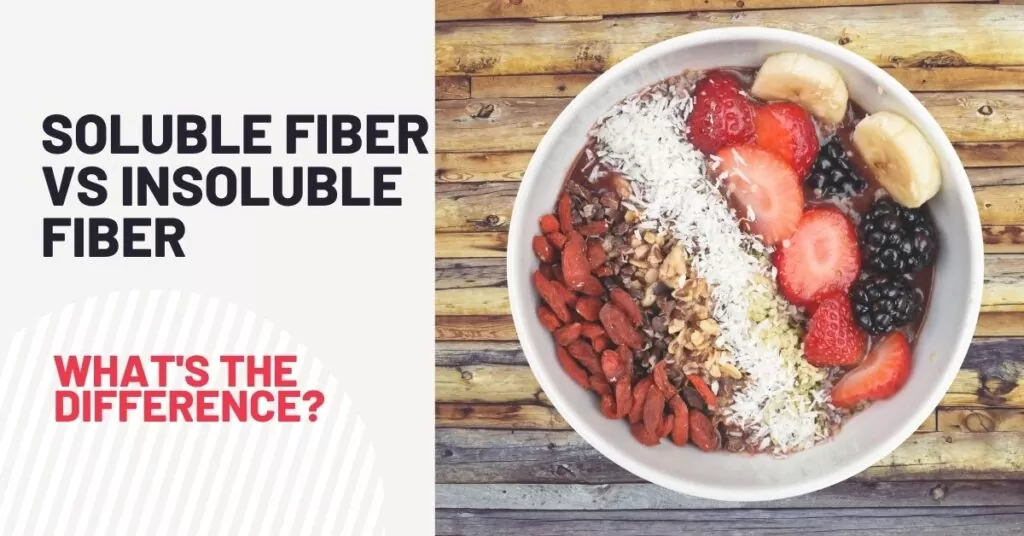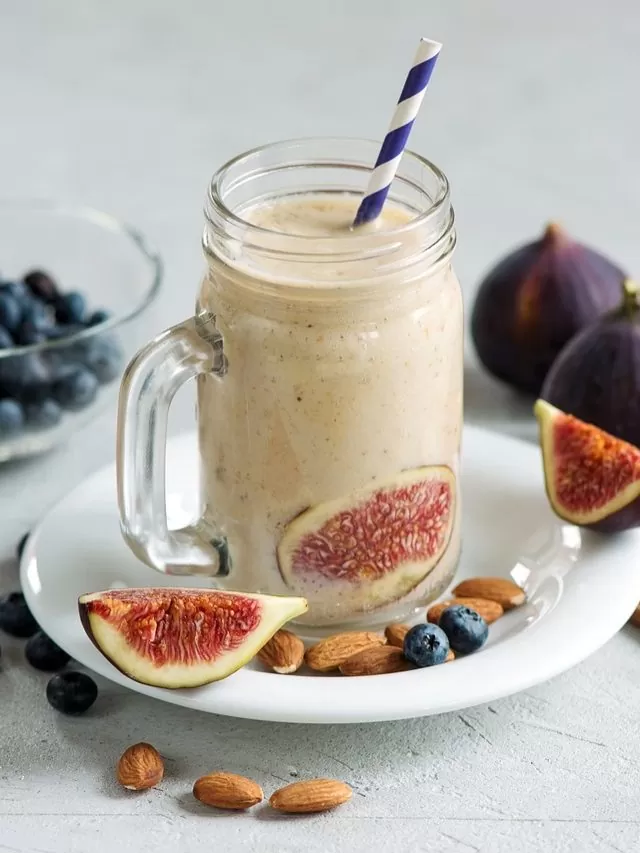When you are making specific dietary changes to your diet, fiber is one of them to consider. Fewer individuals are aware that there are two types of fiber: soluble and insoluble fiber. And they both do a range of things for your body that is both beneficial. But what do these fibers do, or which fiber is essential? This article will guide you on soluble fibre vs insoluble fibre. Before we jump onto the Soluble Fiber VS Insoluble Fiber, let me explain to you what fiber is?
What is fiber?
Dietary fiber is a nondigestible carbohydrate from plants. It’s actually good for your health if you can’t digest fiber. Fiber goes through your digestive tract relatively intact. This aids in the transit of stool through your intestines and the maintenance of regular bowel motions.
Quick Facts
Here are some of the quick facts before we dive into soluble fibre vs insoluble fibre.
- There are some foods that have both soluble and insoluble fiber.
- Both insoluble and soluble fibers food are beneficial to your health.
- People have been using fiber as a dietary aid for ages.
- Getting adequate fiber in a society built on refined carbs can be challenging, such as white bread, pasta, and sugar sweeteners.
- Fiber-rich diets have numerous advantages, ranging from illness prevention to improved gut health.
- You can find soluble fibre sources from various fruits and vegetables, and I will discuss this later.
Soluble Fiber Vs Insoluble Fiber
What is soluble fiber?
Your body breaks down your food into nutrients it can utilize when eating. However, it cannot digest or absorb fiber, which is positive. Fiber, on the other hand, travels through your body mostly intact.
Soluble fibre dissolves in water and other bodily liquids. As it flows through, it produces a gel-like substance. It nourishes your good gut bacteria once it reaches the colon. Gut bacteria are connected to a variety of health advantages, including some protection against obesity and related diseases like diabetes.
What are the best soluble fiber foods?
Some soluble fibers food is oat bran, barley, nuts, seeds, beans, lentils, peas, carrots, citrus fruits, etc.
What is insoluble fiber?
Insoluble fiber does not draw water in to produce a digestion-slowing gel; it has the opposite effect. Instead, it absorbs them and binds them to other substances to create feces. Stools become softer, bulkier, and more regular due to this process.
Which foods have insoluble fiber?
Unlike foods with soluble fibre, insoluble fibre foods are beans, nuts, wheat bran, whole-wheat flour, berries, and vegetables, such as cauliflower, green beans, potatoes, and carrots.
Now when I have covered soluble fibre vs. insoluble fibre, let’s get into the benefits of each of them.
Benefits of Soluble Fiber
There are many benefits of soluble fibre, and some of them are mentioned below:
- Lowers fat absorption and assists with weight loss: Soluble fiber, in the form of a thick, spread-out gel, prevents fats from being digested and absorbed.
- Reduces Cholesterol: It inhibits dietary cholesterol from being broken down and digested. Foods with soluble fibre can help decrease cholesterol levels over time.
- Decreases the risk of cardiovascular disease: Regularly eating soluble fibers food may reduce the risk of heart disease and circulatory disorders by lowering cholesterol levels, regulating blood sugars, and limiting fat absorption.
- Feeding good gut bacteria: It is fermentable in the colon, and foods with high soluble fibre sources help bacteria prosper longer.
- Maintains blood sugar levels: Soluble fibre prevents fats from being absorbed and slows down other nutrients’ digestion rates, including carbohydrates. Soluble fibre foods prevent a quick rise in blood sugar levels. It is known to maintain them.
Benefits of Insoluble Fiber
- Prevents constipation: Insoluble fiber lies in the gastrointestinal tract as an indigestible substance, absorbing liquids and clinging to other byproducts of digestion that are ready to be formed into the stool.
- Helps your body process waste better: Its presence helps prevent gastrointestinal obstruction, constipation, and decreased bowel movements by speeding up the movement and digestion of waste.
- Reduces your risk for colorectal conditions: Insoluble fiber reduces the risk of developing tiny folds and hemorrhoids in the colon by reducing constipation and intestinal obstructions. It may also help prevent colorectal cancer and diverticulitis.
Foods that have a high content in both soluble and insoluble fiber
Apart from juggling between different foods of soluble fibre vs insoluble fibre, why not try the ones that are rich in both.
- Sprouted Grains
- Beans
- Prunes
I will cover some of the most asked questions on Soluble Fiber vs Insoluble Fiber.
Frequently Asked Questions
Which fruits have the most fiber in them?
Ans: Avocado, apple, berries
Which vegetables have the most fiber?
Ans: It is believed that the darker the color of the vegetable, the richer the content in fiber. Some of the vegetables having rich content in fiber are carrots, beans, broccoli, beets,
What is the main difference between Soluble Fiber vs Insoluble Fiber?
Ans: Soluble fibre dissolves in water while insoluble fibre doesn’t.
Which fruits and vegetables are high in fiber foods?
Ans: I am listing some of the good fiber foods:
- Beans
- Broccoli
- Berries
- Avocados
- Whole grains
- Apples
- Dried Fruits
Which is better for our body; soluble fibre vs insoluble fibre?
Ans: In this case, no one takes over the other. Both soluble and insoluble fiber is crucial for the body’s overall growth and development. They work according to their functions, making our bodies healthier.
Which foods are high in fiber?
Ans: 1) Whole-wheat pasta
Switch the white pasta with these and change the way of living.
Amount of fiber: 1 cup cooked = 7g fiber
2) Chickpeas
Legumes can be a game-changer.
Amount of fiber: 0.5cup = 6g fiber
3) Brussels sprouts
They are worth a try.
Amount of fiber: 1 cup = 6 g
4) Barley
A delicious grain that people overlook.
Amount of fiber: 1 cup = 6g fiber
What does fiber do to your body?
Ans: It eases your bowel movement and keeps sugar and cholesterol levels in check.
How much fiber should one consume?
Ans: Instead of tracking soluble fibre vs insoluble fibre consumption, focus on the total quantity of fiber you are consuming every day. The following are the suggested amounts:
| Category | Men | Women |
| Under the age of 50 years | 38 grams | 25 grams |
| Over 50 years | 30 grams | 21 grams |
Your diet should include a range of whole foods, such as fruits, vegetables, and legumes. Make sure to avoid consuming a lot of fibers as it can lead to bloating.
Which dry fruits are high in fiber content?
Ans: Apricots, dates, figs
Which types of fiber are best for constipation relief?
Ans: The ability of insoluble fiber to assist push poops along is its main purpose. In this case, insoluble fiber wins the race when it comes to constipation prevention and treatment since it speeds up the transit of food and waste through the digestive tract.
Conclusion
I have explained the fibers and their types to you in this article. You should take both insoluble and soluble fibers food for a healthier body. No one practically wins the race when it comes to soluble fibre vs insoluble fibre. Soluble and insoluble fiber is important to combat diabetes and some cancers and maintain cardiovascular and digestive health.










1 thought on “Soluble Fiber vs Insoluble Fiber: What’s the Difference?”
You managed to explain a challenging subject with ease; well done!